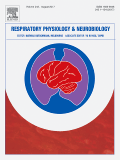
Autor: Treptow E, Oliveira MF, Soares A, Ramos RP, Medina L, Lima R, Alencar MC, Ferreira EV, Ota-Arakaki JS, Tufik S, Nery LE, Bittencourt LR, Neder JA
Respir Physiol Neurobiol. 2016 Nov;233:60-65. doi: 10.1016/j.resp.2016.08.001. Epub 2016 Aug 10.
Abstract
Hypocapnia and endothelial dysfunction might impair microvascular cerebral blood flow (CBFmicr) and cerebrovascular reactivity to CO2 (CVRCO2). Pulmonary arterial hypertension (PAH) is characteristically associated with chronic alveolar hyperventilation and microvascular endothelial dysfunction. We therefore determined CBFmicr (pre-frontal blood flow index (BFI) by the indocyanine green-near infrared spectroscopy methodology) during hypocapnia and hypercapnia in 25 PAH patients and 10 gender- and age-matched controls. Cerebral BFI was lower in patients than controls at similar transcutaneous PCO2 (PtcCO2) levels in both testing conditions. In fact, while BFI increased from hypocapnia to hypercapnia in all controls, it failed to increase in 17/25 (68%) patients. Thus, BFI increased to a lesser extent from hypo to hypercapnia ("Δ") in patients, i.e., they showed lower Δ BFI/Δ PtcCO2 ratios than controls. In conclusion, CBFmicr and CVRCO2 are lessened in clinically stable, mildly-impaired patients with PAH. These abnormalities might be associated with relevant clinical outcomes (hyperventilation and dyspnea, cognition, cerebrovascular disease) being potentially amenable to pharmacological treatment.


